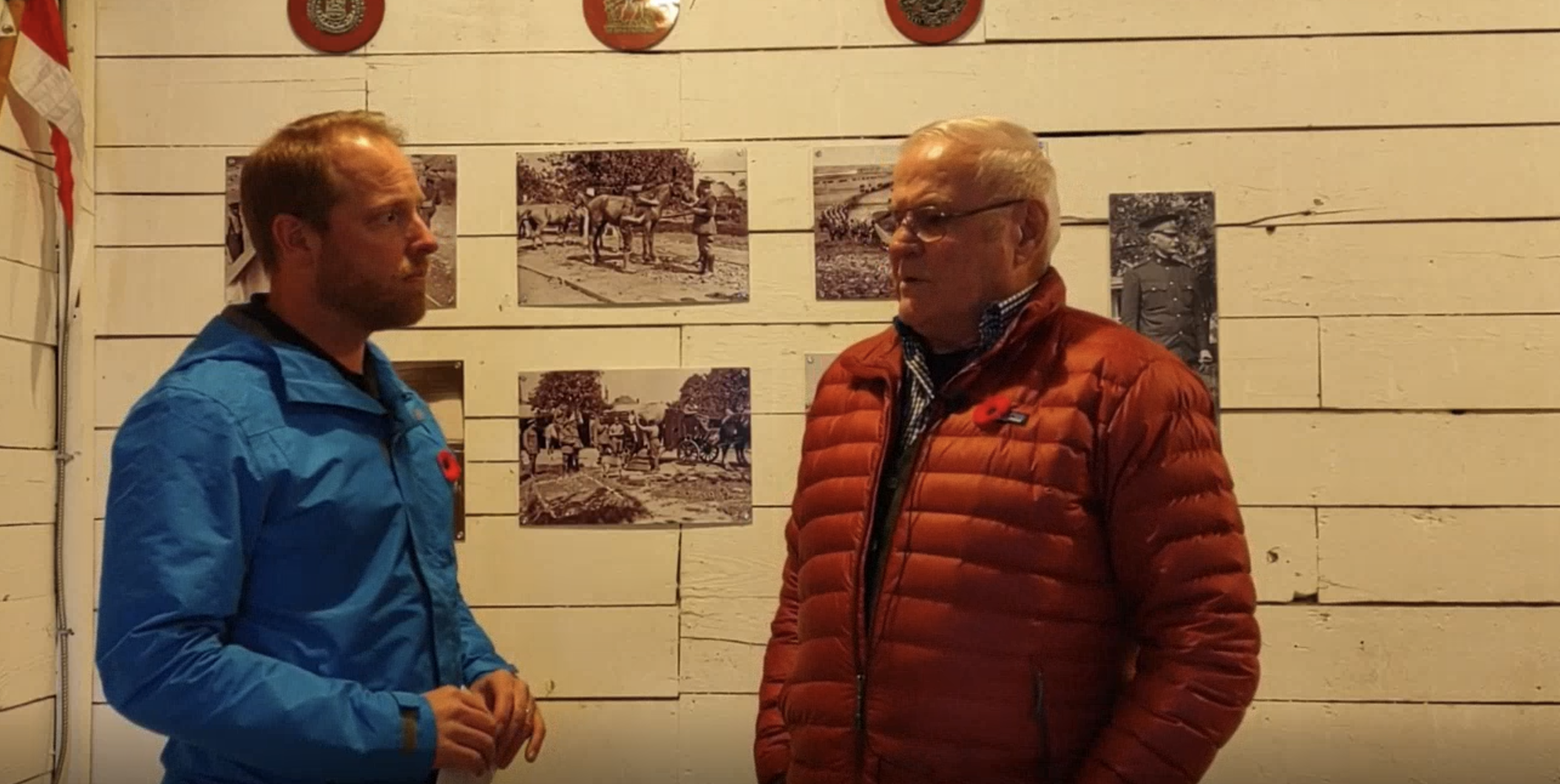Visit Heritage Park
1900 Heritage Dr. S.W. Calgary, Alberta, Canada T2V 2X3
Email: info@heritagepark.ca
Phone: 403.268.8500
News Letters
November 8, 2023
The Armistice of the First World War was signed at 5 in the morning on November 11th, 1918. The ceasefire went into effect six hours later, at the 11th hour of the 11th day of the 11th month, bringing an end to the war.
The war brought about untold suffering, which has been memorialized here in Canada by Remembrance Day since 1931. Most Remembrance Day ceremonies quite rightly focus on the sacrifices made by soldiers as well as the loss of civilian lives. But in the First World War, sacrifices were not solely made by humans. Millions of animals were used in the war effort. Some played active roles in military strategy; others served as a comfort in the harsh realities of trench life.
War horses are likely the most well-known example of animals who served in the First World War. They were ridden into battle as part of cavalry units. They were used as status symbols within the army, as every senior officer was entitled to a horse. Along with mules, they were also used to transport ammunition, supplies, and the wounded. Exact numbers of how many animals were involved in the war are hard to come by. But, it is estimated that by the end of the war, the Canadian army had used approximately 25,000 horses and mules. Across all nations involved, it is believed that around 8 million horses, mules, and donkeys were killed in those four years.

Want to know more about horses and mules in WWI? Watch Dr. Ted Clark, president of the Vintage Veterinary Exhibit Association, discuss the many ways in which horses and mules were used during the first world war.
Other animals were also commonly found in the trenches. Dogs had served a variety of purposes. They accompanied soldiers on their patrols. They were able to alert soldiers to the presence of poison gas long before any humans could detect it. Along with carrier pigeons, they transported messages between units. And like cats, they would help to boost morale. Beyond the very important duty of comfort, cats would also catch mice and rats in the trenches, protecting food and helping prevent the spread of disease. These companion animals would be brought from home or sometimes found along the way.
It was common for units to elect an animal as their mascot. These mascots helped solidify the identity and camaraderie of a particular group of soldiers and, like the companion animals, kept spirits up in the darkest days of the war. The most famous of these mascots is likely Winnie, a black bear cub that was brought from Winnipeg to London by Harry Colebourn, a soldier and veterinarian. Winnie, named for Winnipeg, later served as the inspiration for A.A. Milne’s children’s book character, Winnie the Pooh.
Animals were a powerful symbol both among soldiers and on the Homefront. Mascots were sometimes well-known to the public outside the military. And the sacrifice of these animals was apparent even to children. The 1917 Grain Grower’s Guide, a popular farm magazine in Western Canada, featured a story about two children in Moose Jaw who repeatedly dressed up their Hackney pony in bandages to raise money for the Blue Cross. They received a letter from the Blue Cross commending them on their demonstration of first-aid for horses.
Animals that Served in the First World War. (n.d.). The Canadian Encyclopedia. https://www.thecanadianencyclopedia.ca/en/article/animals-that-served-in-the-first-world-war
Children’s Literature and Culture of the First World War, edited by Lissa Paul, Rosemary R. Johnston, Emma Short
Dr. Clarke, R. (2020, November 10). War Horse – The True Story. Alberta Animal Health Source. https://www.albertaanimalhealthsource.ca/content/war-horse-%E2%80%93-true-story
The Canadian Encyclopedia (1916, June). [Pack horse in Fort Garry]. https://www.thecanadianencyclopedia.ca/en/article/animals-that-served-in-the-first-world-war
Trench Culture – Mascots and Pets | Canada and the First World War. (n.d.). Canada and the First World War. https://www.warmuseum.ca/firstworldwar/history/life-at-th-front/trench-culture/mascots-and-pets/
1900 Heritage Dr. S.W. Calgary, Alberta, Canada T2V 2X3
Email: info@heritagepark.ca
Phone: 403.268.8500